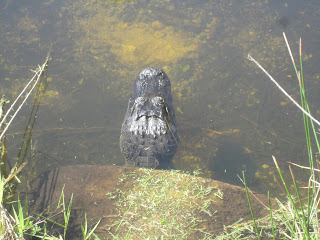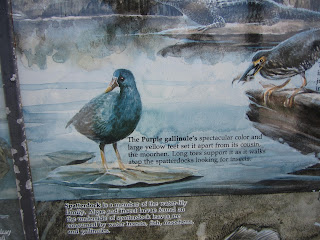February 22
We drove back down the road to Shark Valley, another place inside Everglades NP, with a paved bike path down along a canal filled with alligators and water birds. We biked about 10 miles and were able to view several alligators and birds.
Young alligator
Baby Anhinga birds
Night heron
Great Blue heron above and Tricolored heron below
Great Blue heron eating a fish we saw him catch
February 23
We decided to go back and ride our bikes again but a little further this time. We rode ~15 miles down to the end of the loop where there is an observation tower allowing you to see across the Everglades, then back to the visitor center. On the way out to the tower, we saw an alligator inside a culvert pipe apparently waiting for some fish to pass through.
Approaching the tower
From up on the tower
We saw 55 alligators from the tower back to the visitor center.
February 25
We left Midway campground and meandered towards Collier-Seminole State Park. On the way, Bonnie mentioned she needed a post office if we saw one. About ten miles further down the road we not only found a post office, we found the smallest post office in the United States.
That's right, the small white building IS the post office.
We continued on to Everglades City, a small, town with lots of buildings in disrepair. We got tickets to take an air boat ride in the mangrove swamps, an air boat ride in the grass land swamps, and a swamp buggy ride.
We are not on this buggy.
We will be here for a few more nights before heading to our next destination.








































